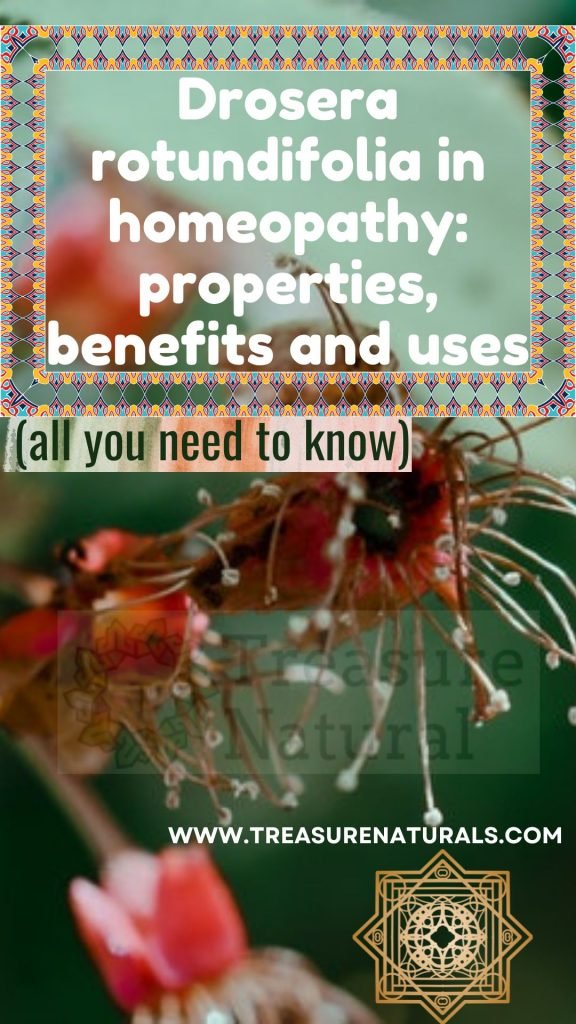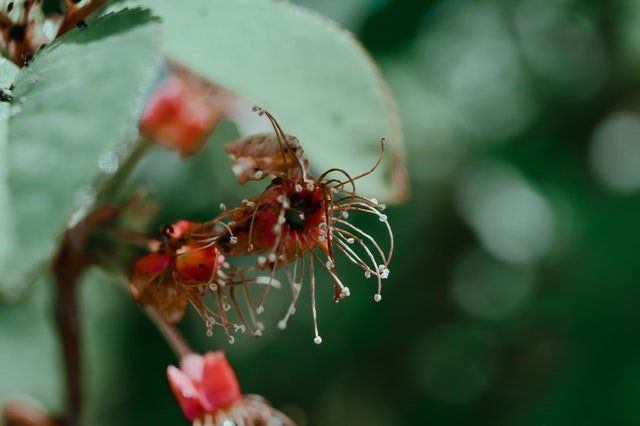
The homeopathic remedy Drosera is obtained from Drosera rotundifolia, a carnivorous plant that captures insects and digests them thanks to the fluid secreted by the glands located on the top of the leaves. For its antispasmodic virtues it is considered a valid remedy against acute forms of dry and insistent cough accompanied by abundant sweating and retching.
Drosera: history and characteristics of the plant
Drosera is a very pleasant-looking plant that hides a secret: it is a carnivorous plant, more precisely insectivorous! Known for centuries in folk medicine, it was used for the treatment of respiratory tract infections and muscle tension. In the past, Asian doctors used it against rashes and, during the Middle Ages, for the plague.
Popular tradition also wanted the fresh juice of the drosera to be used in the preparation of cheese, as it was able to curdle milk.
The species are numerous, in fact the plant is well located everywhere in the world. Drosera rotundifolia, however, grows mainly in Europe, India, China, South America and the United States.
The name comes from the Greek and means “dew, covered with dew”, it is no coincidence that it is often also called Dew of the Sun. The drosera presents, in fact, real colored tentacles on the leaves that secrete tiny drops of sugary, viscous and shiny mucilage, which gives them a dewy and attractive appearance, with the function of attracting and trapping the small insects that recklessly rest on it. At this point the plant traps them, eats them and digests them thanks to its liquid.
Particularly resistant and able to adapt to any climate, it is a plant that prefers humid and cool environments, such as swamps, cracks between rocks, peat bogs, rotting trunks, margins of lakes, rivers, or ponds. It is precisely the aerial parts of the plant that are used to treat various pathologies as they contain essential oils, naphthoquinones and flavonoids. The period in which the concentration of active ingredients is greater corresponds to the summer period.
Drosera: homeopathic remedy and properties
Drosera is a plant with antispasmodic, bronchosedative and antiseptic, decongestant, anti-inflammatory and expectorant action. The action on cough is due in particular to the droserone, a calming substance that allows to act on the smooth muscles of the bronchi. To obtain the Mother Tincture, the whole and fresh plant is used.
The remedy is traditionally used in the following cases:
- violent, spasmodic and deep cough ( pertussoid);
- bone pains;
- hoarse and atonal voice;
- stiffness at the ankles;
- restlessness;
- pharyngeal irritation and chest pangs;
- retching during coughing;
- asthma that is associated with intense bronchospasm, cyanosis and a sense of suffocation.
In 1986 a study conducted on the treatment of dry coughs. A syrup based on Drosera and 9 other substances in 3CH dilution were used. Compared to the placebo-only group, the results were as follows: the symptom disappeared with one week of homeopathic therapy in 20 out of 30 patients versus 8 out of 30 in the placebo group.
The homeopathic remedy Drosera for Cough
Cough is a physiological, defensive reflex of the body that serves to keep the respiratory tract free of irritating or obstructive substances in order to ensure correct and effective breathing. Cough, as almost everyone now knows, can be dry or fatty (better would be to say “productive”), characterized, the latter, by the presence of mucus.
Cough should not be neglected, letting it drag on for a long time for no reason: it could in fact be the indicator of more serious ailments.
The most common causes are respiratory pathologies and irritation of the upper airways: pharynx, larynx and trachea. Irritation can be caused by external agents such as dust, cigarette smoke, gas, cold-humid climate or by infections of viral or bacterial origin.
Homeopathy offers many remedies for cough as a symptom of different pathologies. Drosera, for example, is used in case of dry and convulsive cough, paroxysmal and cavernous. The patient for whom this remedy is indicated suffers from very close coughing attacks and struggles to catch his breath. The cough is also caused by an irritation at the level of the trachea, pharynx and bronchi that cause a feeling of tickling or foreign body, especially at the tracheal level.
Drosera: constitutional type

The Drosera type is a person who is usually restless (especially when he is sick) and stubborn. Such a subject when he is alone suffers from anxiety and, in general, has difficulty concentrating. He also suffers from persecution manias and is very afraid of receiving bad news.
Below are the main characteristics of the remedy in reference to the subject for whom it is particularly indicated:
General action:
- respiratory system;
- lymphatic system;
- osteoarticular apparatus.
Generality:
- feeling of laryngeal tickling;
- sense of chest tightness;
- cyanosis of the face during coughing accesses.
Main clinical indications:
- laryngo-tracheo-bronchitis with pertussoid cough;
- whooping cough;
- compression cough linked to tuberculous adenopathies;
- reactive arthritis;
- synovitis of the hip.
Usually the symptoms presented by the subject Drosera improve with fresh air, with pressure, moving, sitting with the back erect and with the quiet; they get worse after midnight, lying down, talking and singing, with cold food and drink, crying.






